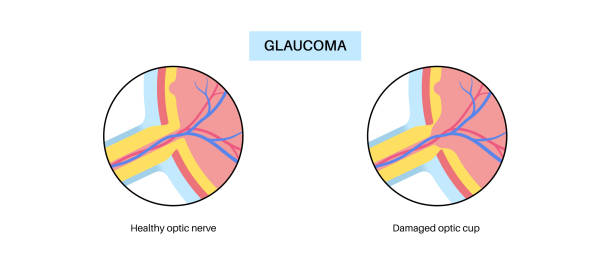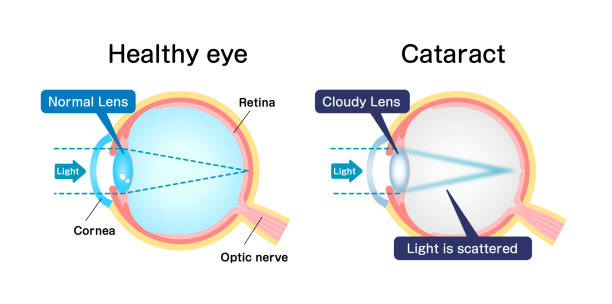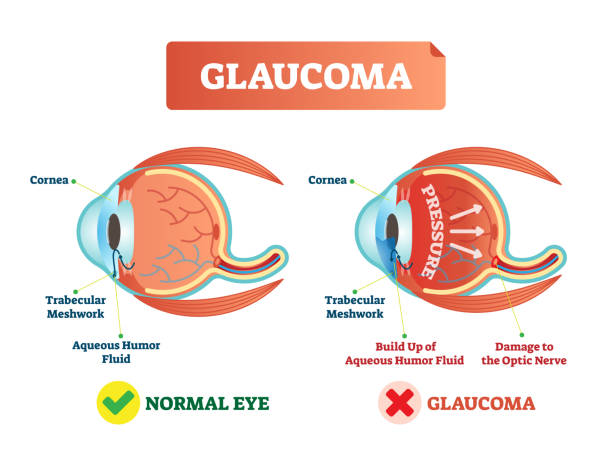Eye health is something many of us overlook, yet our eyes are essential for daily life. Two common eye conditions that affect millions of people around the world are glaucoma and cataracts. Both can cause serious vision loss if not detected early. In this blog post, we’ll discuss how to recognize the early signs of glaucoma and cataracts, why early detection is important, and how you can protect your eyes.
What Is Glaucoma?
Glaucoma is a group of eye conditions that damage the optic nerve, often caused by high pressure in the eye. The optic nerve is responsible for sending visual information from the eye to the brain, so any damage to it can result in permanent vision loss.
What Are Cataracts?
Cataracts happen when the lens of the eye becomes cloudy. The lens is the clear part of the eye that focuses light, so when it gets cloudy, it can cause blurry or hazy vision. Cataracts usually develop slowly and are most common in older adults.
Early Signs of Glaucoma

Glaucoma can be tricky because it doesn’t always show obvious symptoms at first. It is often referred to as the “silent thief of sight” because it can cause gradual vision loss without pain. That’s why it’s important to keep an eye on any changes in your vision. Here are some early signs of glaucoma:
- Gradual Loss of Peripheral Vision
The first signs of glaucoma usually affect your peripheral (side) vision. You might notice that your vision feels narrower or that you have trouble seeing things off to the side, especially in low-light situations. - Blurry Vision
If you experience blurry or hazy vision, especially when looking at things in the distance or when reading, this could be an early sign of glaucoma. It’s important to note that blurry vision might also be caused by other eye issues, so seeing an eye doctor is crucial for a correct diagnosis. - Haloes Around Lights
People with glaucoma may notice haloes or rainbow-colored circles around lights, especially at night. This happens because of pressure on the optic nerve, which distorts how light enters the eye. - Eye Pain or Redness
Although not all people with glaucoma experience pain, some may notice pain in or around the eyes. Redness, especially when accompanied by pain or nausea, can be a sign of acute glaucoma, which requires immediate medical attention. - Sudden Vision Loss
In some cases, glaucoma can cause sudden vision loss, often in one eye. If this happens, it’s important to seek medical help right away to prevent permanent damage.
Early Signs of Cataracts

Cataracts tend to develop slowly, and it may take years before they significantly affect your vision. The good news is that cataracts can be treated with surgery if caught early. Here are some signs that you may have cataracts:
- Blurry or Hazy Vision
One of the first signs of cataracts is blurry vision. If objects appear cloudy or you notice halos around lights, especially at night, it could be a sign of cataracts. This happens because the lens of your eye becomes cloudy and scatters light entering the eye. - Difficulty Seeing at Night
As cataracts develop, they can make it harder to see in low-light situations. This is especially noticeable when driving at night, as headlights and streetlights can appear blurry or overly bright. - Frequent Changes in Prescription Glasses
If you find yourself needing new prescription glasses or contacts more often, it could be a sign of cataracts. The lens of your eye changes shape and becomes cloudier as the cataract develops, affecting your vision. - Fading or Yellowing of Colors
Another common symptom of cataracts is a change in how colors look. You may notice that things appear more yellow or that colors seem duller than they used to. This happens because the lens of the eye loses its ability to filter light properly. - Double Vision in One Eye
Double vision in one eye, or diplopia, is another early sign of cataracts. This can make it difficult to focus clearly on objects and may worsen as the cataract progresses.
Why Early Detection Is Important
Both glaucoma and cataracts can lead to severe vision problems or even blindness if left untreated. However, early detection can make a significant difference in the outcome of these conditions. For glaucoma, early treatment can slow or even prevent further optic nerve damage. For cataracts, surgery to remove the cloudy lens is very effective and can restore clear vision.
How to Protect Your Eyesight

While you can’t always prevent glaucoma or cataracts, there are steps you can take to protect your eye health:
- Get Regular Eye Exams
The best way to catch glaucoma and cataracts early is by scheduling regular eye exams with an eye care professional. A comprehensive eye exam can help detect these conditions even before symptoms appear. If you’re over 40 or have a family history of eye disease, it’s especially important to have eye exams every two years. - Wear Sunglasses
Protect your eyes from harmful UV rays by wearing sunglasses that block 100% of UVA and UVB rays. Prolonged sun exposure can increase the risk of cataracts, so it’s essential to shield your eyes when outside, even on cloudy days. - Maintain a Healthy Diet
Eating a balanced diet rich in antioxidants, vitamins, and minerals can help keep your eyes healthy. Foods like leafy greens, fish high in omega-3 fatty acids, and fruits rich in vitamins C and E are great for eye health. - Stay Active and Manage Health Conditions
Exercise is beneficial for overall health, including eye health. Regular physical activity can help control blood pressure and reduce the risk of developing glaucoma. If you have health conditions like diabetes, keeping them under control can also reduce your risk of cataracts and glaucoma. - Quit Smoking
Smoking is linked to an increased risk of cataracts and other eye problems. If you smoke, quitting can help reduce your risk of developing these conditions.
Conclusion
Being aware of the early signs of glaucoma and cataracts is essential for protecting your eyesight. If you notice any changes in your vision, it’s important to see an eye doctor right away. With regular eye exams and the right lifestyle habits, you can reduce the risk of vision loss from these common eye conditions and enjoy healthy eyesight for years to come.

